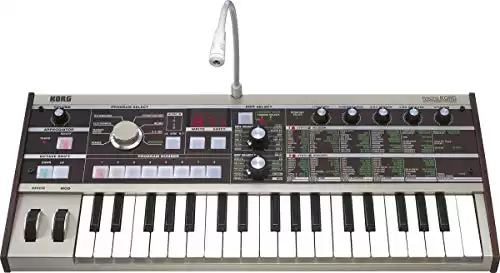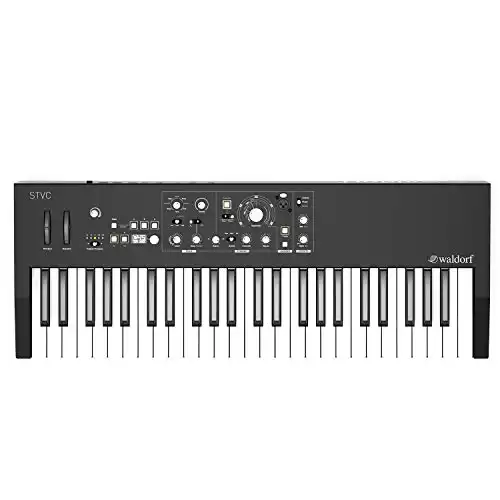When you hear talking instruments on a recording, the terms “talk box” and “vocoder” are often used interchangeably.
Are these devices the same thing, or are there differences between the two that are important to consider as a composer?
This guide takes you through the differences between a talk box and a vocoder to ensure that you can apply the correct technology to your next performance or recording.
What’s the Difference between a Talk Box and a Vocoder?
A talk box makes an instrument sound more like a human voice. It accomplishes this outcome by directing notes through a tube and into the singer’s mouth, acting as a sound chamber to broadcast the audio. A vocoder does the opposite, making a human voice sound like an instrument.
When you have a talk box to use, you’ve got an electromechanical device that turns instrument sounds into talking noises.
This effect was quite popular in the 1970s. Artists like Stevie Wonder, Joe Walsh, and Peter Frampton all used it in their works.
A talk box works by amplifying the instrument that needs to speak, which is often a guitar. The signal is sent to a horn-type driver, which offers an output through short and flexible tubing.
The audio routing terminates at the mouth, which should be positioned close to a microphone that feeds into the sound system.
As the performer speaks, the mouth functions as a mechanical filter for the acoustic signal. That allows the microphone to pick up the filtered sound.
When the style went out of fashion for music in the 1980s, most companies stopped producing talk boxes. As more tech elements fuse back into hooks and performances, you’ll find several brands are now available if you want to experiment with this effect.
Two of the best options available right now are the Heil Talk Box Reissue, the MXR M222, and the Danelectro Free Speech. The latter option doesn’t require an external microphone, which can deliver some unique benefits to some musicians.
■ What about a Vocoder?
The vocoder is an entirely unique animal when compared to a talk box. It was first invented by Homer Dudley in the 1930s to create telecommunications applications.
Modern vocoders create talking instrument effects by using 100% electronic methodologies.
A standard setup uses two inputs. The first is for the carrier input, which is the instrument sound you want to include.
You’ll also need a modulator input (analyzed input) from a microphone or another signal source. When the artist speaks into the mic, the vocoder superimposes the desired effects on whatever is currently plugged into the carrier.
The microphone feeds several parallel filters with a vocoder, with each one covering a somewhat narrow frequency band. It would be a fair comparison to say it’s similar to a graphic equalizer. This input must have separation because different sounds are associated with unique frequencies in human speech.
With the letter “S,” your voice has higher frequencies that distribute sounds for others to hear. If you speak that into a microphone, filters fed by the mic will have an output, while the lower Hertz won’t have much work to do.
The opposite issue occurs for the letters “P” and “B.” The explosive sounds contain a lot of energy that often requires additional controls, such as a pop filter.
Most vowel sounds and other consonants tend to fit somewhere between the two extremes in the midrange.
■ That’s Only Half the Picture with a Vocoder
The instrument channel for a vocoder is like the one for the microphone. It splits the audio into several filters that are tuned to their counterparts on the other input. The only difference is that they include VCAs or DCAs, which are voltage-controlled or digitally controlled amps at their outputs.
The amps respond to the signals generated by the channel and microphone filters. When there’s more available through a particular one, it raises the gain.
That’s when you need to consider what happens when playing a note through the instrument input while speaking into the microphone. If the output occurs from the lowest frequency filters and the other source does the same, the input is allowed to pass.
If the opposite occurs, a different result happens. That’s how you can have sounds that seem tinny or overly deep coming from the vocoder.
When you control filter equivalency, the energy patterns are easier to superimpose onto an instrument effectively to produce intelligible and accurate vocals.
Vocoders Do More than Create Vocal Sounds
Although creating instrument sounds with vocals is the most popular application of a vocoder, it’s not the only way you can use this tool.
You could play percussive instruments into the microphone input instead of using your voice. The different sounds can get encoded to other keyboard keys, providing a virtual drumset that can be used in recording sessions or various gigs.
If you have multiple brass instruments to include for a composition, the same technique could be used. The trumpet, baritone, trombone, tuba, and others can get assigned to specific keys. The disadvantage of using anything other than percussion is that you can only set one tone. You can put a bass drum on one key and a cymbal on another.
For the best results, your instrument signal should always have lots of harmonics to use. Without that extra audio, the filters won’t always have enough to work with when turning your input into a unique instrument.
Is It Dangerous to Use a Talk Box or a Vocoder?
In a word, no. It is not dangerous to use either a talk box or a vocoder for your music.
Some authors have written content that suggests the vibrations from a talk box could be damaging to your teeth. At the extreme end of potential concerns are hearing problems and negative cardiovascular impacts.
Roger Troutman used a talk box for decades when performing. Perhaps he might have encountered some health issues from using this tool, but his brother shot him.
Anything like that comes from the stuff of urban legends. It’s like saying “Bloody Mary” in front of a mirror three times and expecting to get clobbered over the head by a vengeful, guitar-playing spirit.
Although it could be “technically” possible, the odds are so great against one of those outcomes happening that you’d have a better chance to win the lottery 100 days in a row.
That’s not to say using a talk box won’t create dangerous circumstances. You could always find yourself in a large crowd trampling past you because they think you’re Peter Frampton.
Most of the dangers discussed from using vocoders and talk boxes came from a 2014 incident when a bagpipe player died from a bad reaction to the fungi and yeast growing in the instrument’s tubes.
Even then, the 61-year-old dealt with symptoms for seven years before succumbing to the problem. He was diagnosed with hypersensitivity pneumonitis, a chronic illness caused by how the immune system responds to different environmental irritants. Doctors decided to check his bagpipe after the man took a three-month trip to Australia in 2011 and got better.
Although they’d determined the cause, the lung inflammation caused irreversible scarring. It eventually caused him to be unable to breathe because of the extensive organ damage.
You can prevent this unlikely event by cleaning out the talk box tubes after each performance. If you haven’t used it in a while, consider giving the tubing a good bath before proceeding.
- Analog Modeling Synthesis System
- Multi Timbral = 2
- 4 Voices
- DC 9 V Power Supply or 6 AA Alkaline Batteries
- Arpeggiator Types: 6
- Output Options: L/MONO, R, Headphones
- Compatible with macOS and Windows
Best Vocoder to Use for Musical Production
Although you can find a few good vocoder options under $500 (such as the Korg microKorg Analog Synth or the BOSS VO-1 Vocoder Effects Pedal), I prefer something a bit larger when producing music.
That’s why I stick with my Waldorf STVC String Synth and Vocoder.
It delivers a 49-key structure with two sound engines that make compositional work quick and simple. The onboard effects are fantastic to use, and the vocoder consistently exceeds my expectations when I’m experimenting with different sounds.
The eventual result is a sound that feels like it comes straight out of 1970. It still offers the creativity and modernism you want from a vocoder while exploring vintage options other brands don’t provide.
It’s sturdy, dependable, and one of the best investments you can make in your music if you want to explore this direction.
Do I Need a Talk Box or Vocoder for My Music?
If you want to improve the sound of your chords in unique ways, a vocoder can unlock some interesting paths to develop. When you want to create something from a monophonic source, a talk box is the better option to choose. These tools work well for all music genres.
Deciding to use a talk box or vocoder is a personal decision. For me, I’ve always found more value in the latter choice, but I’ve experimented with both.
I tend to compose electronica music. With my vocoder, I can replicate wind sounds with whistles, bird cries with cymbal crashes, or turn my cat meowing into a blaring trumpet. It’s a lot of fun to explore the different possibilities!
Since I’ve moved away from live performances in recent years, the need for a talk box is minimized. If I’m playing a stage and need voice modification, I might use software filters or even a megaphone. It’s a bit easier, but that doesn’t mean you shouldn’t try this tool if you’re curious about it.
Talk boxes and vocoders will probably go out of style in the next decade. Until then, there’s some time to develop your music to see what your signature sound could be.






